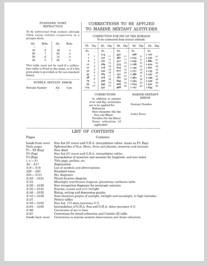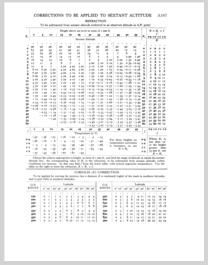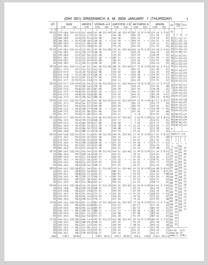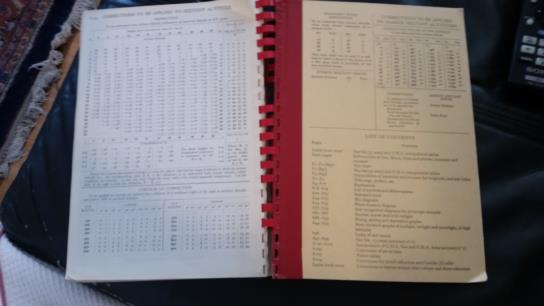
NavList:
A Community Devoted to the Preservation and Practice of Celestial Navigation and Other Methods of Traditional Wayfinding
From: Gary LaPook
Date: 2016 Oct 16, 13:02 -0700
O.K., I see what's happening. If you have not handled the printed Air Almanac you may not appreciate how it was laid out for the use of flight navigators. Yes, there is a list of 173 stars in the back of the book and the GHA of Aries and GHA and declination of the sun provide a one-tenth precision, that the explaination says should just be ignored, and interpolation tables for GHA sun and GHA Aries to the nearest second of time but the explaination says that these are for the use with astro-trackers and not for normal navigation. As I said before, the AA was optimised for use by flight navigators to provide easy and quick solutions since a fix that takes a half hour to work out is useless since the plane may have travelled 220 NM in the interim. And the AA was designed to be used with HO 249 which only privides Hc to a whole minute of precision so any working out the GHA and declination to a higher level of precision provides no increase in the accuracy of the fix.
I have attached photos of the front and back inside covers so that you can see the real layout. Inside the front cover you have the list of 57 stars to a precision of one munute and the interpolation table with increments of four seconds of time. Theis is as far as a flight navigatior looks, he never looks at the voluminous 173 star list in the back of the book or at the interpolation tables buried way back in the book. I have also attached a photo of the inside back cover which is where you find the refraction, coriolis and, for surface navigators, a dip table. This is only the second place a flight navigator looks, just for the refraction and coriolis tables. Those are the only pages a flight navigator looks at, plus the daily page from which he takes out the data he needs but only to a one minute of arc precision. You really have to understand the need for haste in the computing of fixes. Not only is the plane travelling at 450 knots, 7.5 NM per minute, but you also need a fix every hour, not just twice a day as on your boat, so the flight navigator is kept busy thoughout the flight. And there is the issue of fatigue on a long fllight so simplifying the process helps to minimize errors near the end of a long overnight flight.
The AA was designed for flight navigation without the surface navigator in mind. But the data is there for a surface navigator who wants to work to a one-tenth of a minute precision, if he wants to, but, let me ask you this, how will you compute your intercept to a one-tenth of a nautical mile precision when the refraction table and the dip table corrections are only tabulated to a whole minute of arc precision as appropriate for use with HO 249?
gl
-------------------------------------------------------------------------------------------------------------------------
Gary,
My hard copy of the Air Almanac is 1998 and it lists GHA of the sun and Aries and the SHA of the stars to the tenth of a minute. It also lists the dec. of the sun and stars to the tenth. The inside front cover has the 4 second interpolation table but on page A 164 and A 165 the table is for every second for ten minutes.
The only place that the new Air Almanac is less precise than the NA is the Moon and planets - they are listed to whole minutes only.
As you know, the Air Almanac is not printed anymore but is avaible ( free ) as a PDF download from the USNO website. Other than the Moon or planets the data is no less than the ( not free ) Nautical Almanac.
John H.












